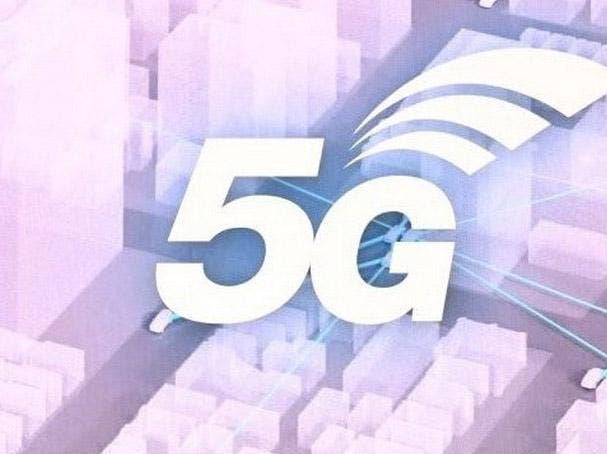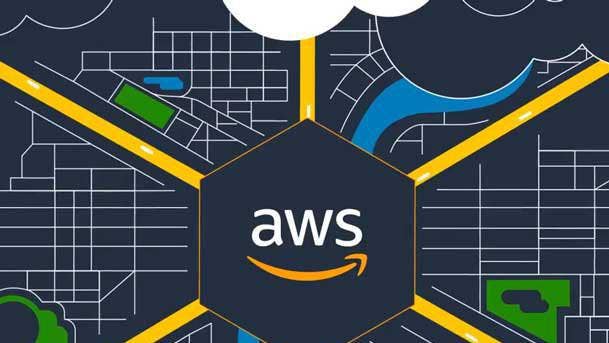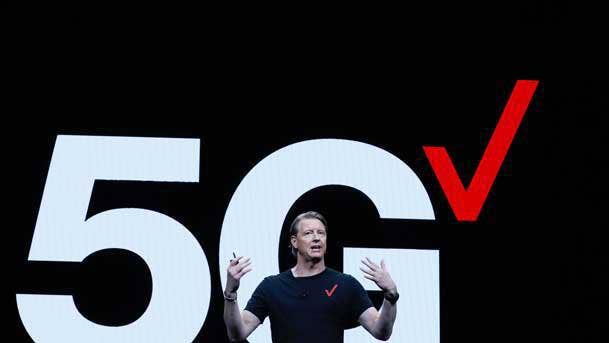AWS Wavelength On Verizon 5G Edge: 5 Things To Know
Amazon Web Services brought its compute and storage capabilities to the mobile edge this week for developers in Boston and the San Francisco Bay area.

Amazon Web Services brought its compute and storage capabilities to the mobile edge this week for developers in Boston and the San Francisco Bay area with its new AWS Wavelength on Verizon’s 5G network.
AWS’ first Wavelength Zones use Verizon’s 5G Edge mobile compute platform to allow developers and enterprises to deploy ultra-low latency-dependent applications to mobile and connected wireless devices at the edge of Verizon’s 5G Ultra Wideband network.
Use cases for 5G mobile edge compute using AWS Wavelength include machine learning (ML) inference at the edge, autonomous industrial equipment, connected cars, smart cities and factories, the Internet of Things, live and interactive video and game streaming, and virtual reality. Developers can build applications that provide near-real-time analytics for instant decision-making and automated robotic systems for manufacturing facilities.
AWS Wavelength’s debut comes eight months after AWS CEO Andy Jassy and Verizon CEO Hans Vestberg (pictured) unveiled the new service at the AWS re:Invent conference in Las Vegas in December.

AWS Wavelength Availability
The Boston and San Francisco Bay Wavelength Zones can be accessed upon request from developers who want to build apps to service Verizon Wireless customers in those metropolitan areas, according to AWS “chief evangelist” Jeff Barr. Coverage started in San Jose yesterday and is expected to extend to the rest of the Bay area in the coming weeks.
AWS expects to launch AWS Wavelength in additional U.S. cities by year’s end. It’s also working with telecommunications companies including U.K.-based Vodafone, Seoul’s SK Telecom and Toyko’s KDDI to launch Wavelength Zones in Europe, South Korea and Japan.

How It Works
With AWS Wavelength, developers and enterprises can deploy parts of their applications needing ultra-low latency at the edge of the Verizon 5G network—using the same AWS APIs, tools and functionality that they already use—and then connect back to the full range of cloud services running in AWS.
AWS Wavelength extends AWS’ cloud infrastructure to Verizon’s networks. AWS compute and storage services are embedded in Verizon data centers at service access points on the edge of Verizon’s 5G network. Application traffic must only travel from a device to a cell tower to a Wavelength Zone.
“This enables traffic to reach application servers running in Wavelength Zones without leaving the mobile network, reducing the latency that would result from multiple hops to the internet and helping developers start to unlock the potential of 5G for their applications,” Matt Garman, vice president of AWS sales and marking, and Tami Erwin, executive vice president and group CEO of Verizon Business, wrote in a joint blog post.
Using traditional mobile architectures to access the cloud, application data otherwise must move from a device to a mobile network, on to networking devices at the mobile edge and then to the internet to reach application servers in remote locations, which can result in longer latency.
Developers can deploy their applications to the 5G Edge by extending their Amazon Virtual Private Cloud to the Wavelength Zones and can run AWS services including Amazon Elastic Compute Cloud (EC2), Amazon Elastic Block Storage (EBS), Amazon Elastic Container Service (ECS) and Amazon Elastic Kubernetes Services (EKS). They also can continue to use AWS services such as AWS CloudFormation, AWS Identity and Access Management (IAM) and AWS Auto Scaling to manage, secure and scale their applications.
AWS is launching the service with support for Amazon EC2 T3, R5 and G4 instances.
AWS account holders can deploy their 5G applications in Wavelength Zones by logging into the AWS Management Console, requesting access at aws.amazon.com/wavelength/ and enabling the desired Wavelength Zones. As with the AWS cloud, users can sale up or down and only pay for the resources used.

Verizon’s 5G Ultra Wideband Network
The term 5G refers to fifth-generation wireless technology. Verizon said it’s building its 5G Ultra Wideband network from the ground up. Launched in April 2019, the network offers massive capacity and ultrafast speeds in addition to ultra-low latency, according Verizon.
The 5G network enables throughput up to 10 Gbps—which is at least 10 times faster than 4G—high bandwidth with 100 times larger data volumes than 4G, and the ability to connect more than a million devices per kilometer, the company said.
Verizon’s 5G Ultra Wideband network currently is available in parts of 35 metro areas nationwide, which also include Los Angeles, Atlanta, Dallas and Chicago. Verizon plans to expand it to more than 60 cities by the end of the year.

How AWS Wavelength Helps Partners
AWS Wavelength gives startups, enterprise and independent software vendors across all industries new business opportunities driven by 5G applications, according to AWS, which would not disclose further information on how partners could get involved.
The AWS Wavelength product page says developers and customers can get support for AWS services running in AWS Wavelength by creating a case with AWS Support.

How AWS Wavelength Already Is Being Used
AWS customers including Avesha, Edgegap, LG Electronics, ShotTracker, Sony, Summit Tech and Tata Consultancy Services have been using AWS Wavelength in industries including entertainment, health care, manufacturing and sports, according to AWS.
Boston-based Avesha has developed an edge-based, artificial intelligence inferencing system and a network-based, real-time ML platform for detecting polyps. Working with hospitals, it’s been testing ML inference at the edge using AWS Wavelength and Verizon 5G to help doctors detect and identify polyps in real time using streamed video and images.
Avesha’s platform connects a procedure room with the inference models on high-performance GPUs at the cloud edge and back end, and it continuously updates the models, “resulting in low latency performance with very high accuracy,” according to AWS. This could preclude procedure rooms from having dedicated on-premises servers with graphics processing units, which, if not fast enough, could miss polyps, it said.
Identifying polyps is difficult, according to Avesha CEO Raj Nair.
“Machine learning inference is an invaluable tool to help physicians make that diagnosis, but it requires near-real-time analysis, comparing a live video feed to a data set of several hundred thousand polyps,” Nair said in a statement. “AWS Wavelength on Verizon’s 5G Edge provides that intelligence to doctors during the exam, improving the patient experience and potential outcomes, and fundamentally changing the diagnostic process.”
Merriam, Kansas-based ShotTracker, which uses a sensor-based court system to automatically capture more than 70 basketball stats for teams, broadcasters and game partners, is testing its technology with AWS Wavelength and Verizon’s 5G Edge to deliver more data in real-time.
“In sports, seconds matter—it can be the difference between winning and losing—that’s why we are excited about the potential of ultra-low latency provided by AWS Wavelength and Verizon 5G Edge,” Davyeon Ross, ShotTracker’s co-founder and president, said in a statement. “Access to 5G and Edge compute unlocks unprecedented speeds and data access that will revolutionize how our data is consumed.”
When AWS introduced AWS Wavelength in December, it was piloting the service in Chicago with customers including the National Football League and video game publisher Bethesda Softworks.
The NFL was testing it for lower data transmission latency to provide new in-stadium enhancements for fans, while Bethesda Softworks was using it to deliver frictionless, ultra-low latency experiences for gamers through its new Orion cloud gaming technology for video game streaming.